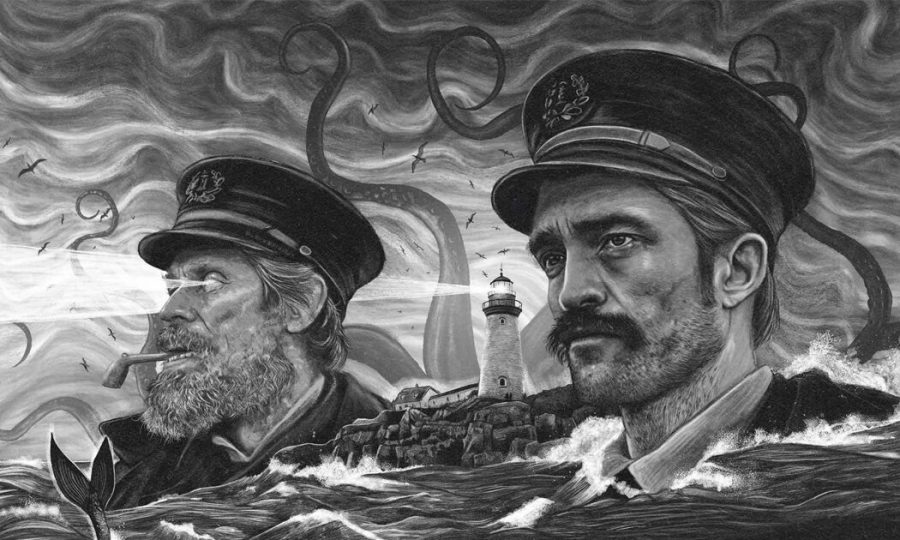The Eagle’s Cry Revew: The Lighthouse
Unappreciated movies often hit the spotlight at unexpected times. Whether some kind of meme arises that brings the film the attention it deserves, or if word of mouth spreads it, all movies get their chance. One movie I felt never got its chance was The Lighthouse. Truly one of my favorite productions ever, I feel this movie got more coverage in meme culture than in film culture. This movie deals with serious themes, and is deeper than surface value, showcasing several different narratives, and leaves its meaning up for interpretation.
The movie is alluring, filmed on a stunning New England-esque lighthouse, shot on 8mm black-and-white film. When one learns that the entirety of the movie was shot on film, one gains even more respect for the craft and the process that is The Lighthouse. Few other movies have ever shook me to my core in such a way, as the movie is both haunting, yet enchanting in the wildest ways. Sparing details I will follow some of the most interesting lore and scenes of The Lighthouse.
The movie makes many old-timey references to sea shanties and tales that may go over the head of the average landlubber. Perhaps some of my favorite topics discussed in the movie are the myths behind seabirds, harpies, and sirens. For those who don’t know, in sailor legend, it is considered bad luck to kill a seabird, being that they contain the souls of sailors who were lost at sea, and if killed, a terrible torrent will be unleashed upon the murderer. This is eluded to, after a sea bird is killed in a fashion which I will not disclose, to spare some really cool parts of the movie. In the wake of such, Winslow and Tom, the two main characters of the movie, are subjected to a storm that lasts an indeterminate amount of time, subjecting them to struggles with alcohol, sexuality, and reality. Harpies, in normal nautical nonsense, needlessly needle ne’er-do-wells nonstop. No? Seriously, without crummy alliteration, Harpies can best be described as bird-like humans who terrorize sailors on their voyages, feeding upon them and their souls. When damning Winslow to the sea, the older character Tom makes references to the fact that Winslow will be left “but a blasted bloody film now a nothing for the Harpies and souls of dead sailors to peck and claw and feed upon,” touching base on both of these myths. Earlier in the film, they refer to the mythology of sirens, saying that one of the old wickies went mad with siren talk, and Winslow had found a totem of a mermaid within the fibers of his ramshackle cot. Sirens, or mermaids, are sexually deviant creatures who lure sailors to them with their songs, and then ultimately drag them to their deaths. As the film progresses, and Winslow psyche dwindles further, he has his own run ins and fantasies with these mythical critters.
Willem Defoe is a marvelous actor. One of this reporter’s favorite performances of his was as the Green Goblin In Spiderman, and he truly is one of the most talented actors of our time. Hearing Defoe speak in The Lighthouse in such an antediluvian way is strangely enchanting, as he sells the role immaculately. Robert Pattinson, most notable for his breakout role as the teenage heartthrob vampire in Twilight, didn’t just deliver, he exceeded any expectations set for him in this strange and challenging role.
Bottom line: Overall this movie is a must see!











